
views
- Turn off your phone immediately and dry it off with a lint-free cloth.
- Allow the charging port to air dry in a well-ventilated area for at least 5 hours.
- To get excess water out of your phone, gently tap it against your hand with the charging port facing down, so water can drip out.
- Avoid using rice to speed along the process. Instead, place the phone in a room with a fan, and/or place silica packets near the charging port.
Drying the Port Safely
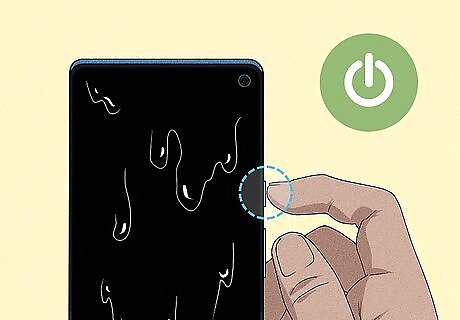
Turn off your phone right away. No matter how water resistant your phone is, power it down immediately when it gets wet. Don't be tempted to turn your phone back on until you've thoroughly dried the charging port, headphone jack, and other components. If there is anything plugged into your phone when the charging port is wet, such as a charging cable or battery-extending case, remove that as well. If your entire phone is wet (not just the charging port), remove the SIM card tray, SIM card, and any external memory cards. If you're using an Android with a removable battery, remove that too.

Use a lint-free towel to dry all visible water. Wipe every part of the phone or tablet with a clean, dry, lint-free towel. Microfiber is a great material for this, as it's highly absorbent and dries quickly. Continue wiping until you've removed all of the water that you can.

Gently tap your phone against your hand with the charging port facing down. Make sure the charging port is facing down before you tap the phone on your hand—if the port is facing up, water can run deeper into your phone. Continue tapping your phone on your hand until you're sure all excess water has dripped out.

Allow the phone air dry in a well-ventilated area. The best way to get water out of the charging port is to let it evaporate naturally. Air circulation will dry the port faster, so let the phone dry in a room with fans, a dehumidifier, or any other moving air source. If you don't have a fan, you can also try drying the charging port near an electrical appliance that has an exhaust vent, such as behind your computer or TV. Just avoid very hot airflow—never use a blow dryer or place the phone too close to a heater. Keep the charging port facing down while your phone dries, if possible.
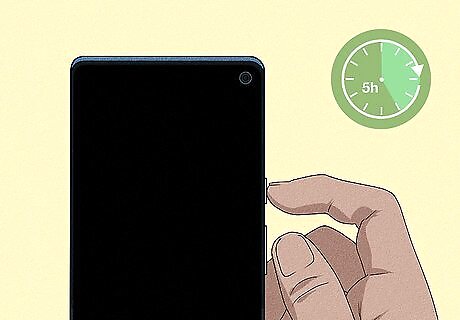
Allow the phone to dry for at least 5 hours before turning it back on. Apple recommends allowing your phone to dry for 5 hours before turning it back on or connecting a charging cable to the Lightning port. The recommendations for Android models vary, but waiting at least 5 hours should be long enough for the charging port in any phone to completely dry. Don't turn your phone on any sooner to avoid damaging your phone. Once the charging port has dried long enough, turn on the phone and watch for a "Liquid Detected" alert. If you see this alert, turn off the phone again, and wait another few hours for it to dry. Do not select "Emergency Override" to allow your wet phone to charge because this will damage your phone. If your phone was submerged, there may be more water that you can't see. Continue drying the phone for 24-48 hours for stubborn cases.

Speed up the drying process. If there is still water in the charging port, there are a few other tricks you can try: If the phone is taking too long to dry, set some bags of silica gel around the base of your phone to absorb excess moisture. You can also place the phone in a sealable bag with a few silica packets (after letting the phone air dry) to absorb more moisture. Use a can of compressed air to blow out remaining water from the charging port. Spray in gentle, short bursts, and only once or twice, from several inches away.
What to Avoid
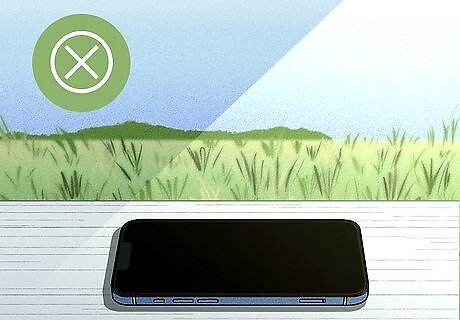
Don't place your phone in direct sunlight to dry. It's okay to dry your phone outside in warm weather, but avoid exposing it to extreme temperatures. Putting your phone in direct sunlight can cause it to overheat and cause more damage.
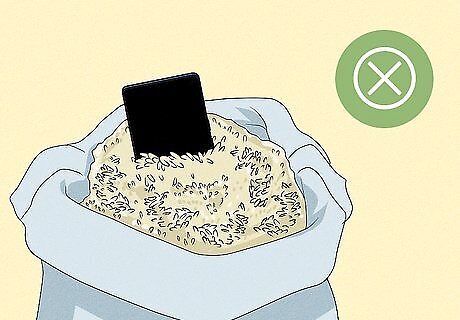
Don't put your phone in rice. Even if the water in your charging port is hard to remove, putting your phone in rice will not speed up the drying process. Plus, the dust from the rice or particles from the rice could get into the charging port and other openings and cause damage. Instead, use silica gel packets. The loose silica particles are contained in a bag, which prevents tiny pieces of the substance from getting inside your phone and damaging it.

Don't insert any foreign objects into the charging port. Putting anything inside your phone's charging port is a bad idea because you could push the moisture further in. Cotton swabs, toothpicks, and paper towels can all damage your charging port.
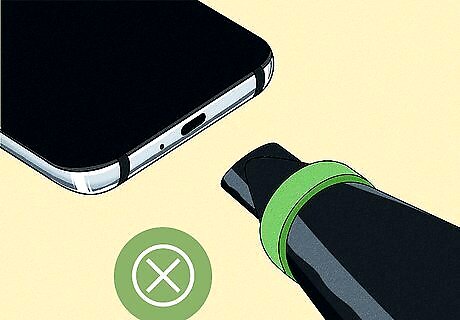
Don't use a hair dryer. The heat of a blow dryer can damage the electronics inside of your iPhone or Android. If there's still a lot of water in the charging port after using our drying tricks, you can gently blow into the port with your mouth—just don't spit in the port by accident! You can also use gentle bursts of compressed air.
Check for Sustained Damage
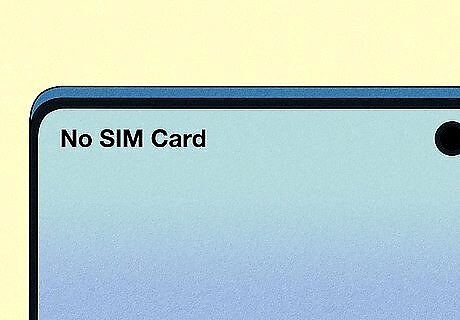
There are some signs that your phone has been wet too long and has sustained damage. If, after removing water from the charging port, your phone exhibits any of the following signs, it's best to turn to a professional for repair: Visible corrosion on the charging port. Your phone doesn't power on or the phone powers on, but the screen stays black. Your phone is getting hot easily indicates that the battery may have gotten water damage. The speakers sound weird, like one may not work and the other does. A foggy screen that can't be cleaned. Your phone says "No SIM Card" even if there is one inserted.
















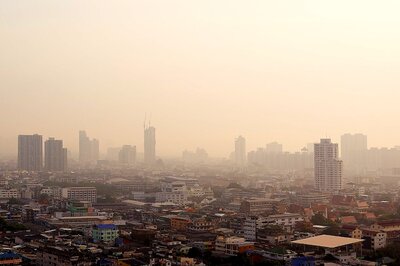

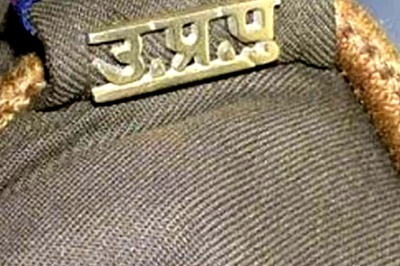

Comments
0 comment